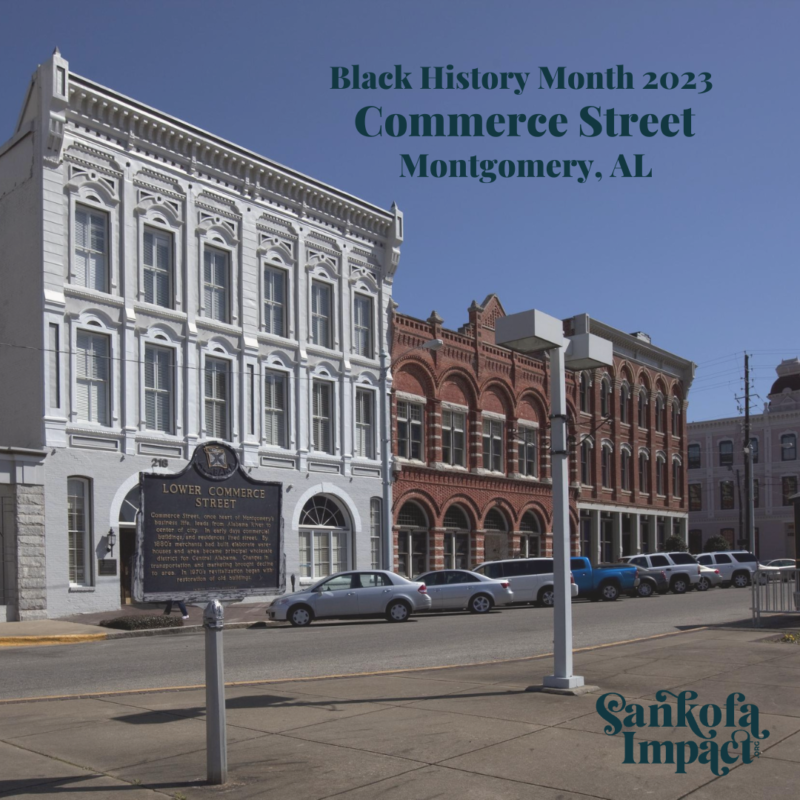Montgomery was incorporated in 1819 and is the capital of Alabama. Often referred to as the, “Cradle of the Confederacy,” today in the downtown core, you can pay homage to country music legend Hank Williams, take in a Montgomery Biscuits baseball game, or take a leisurely stroll down historic Commerce Street.
160 years ago, people freely walking in downtown Montgomery would routinely witness dozens of captured Black people being paraded from the Alabama River up to Commerce Street, so named for the wealth and prosperity that flourished for white residents during the era of enslavement.
There were more business spaces in 1860 dedicated to the institution of enslavement in Montgomery than to worship and hospitality combined. Slave depots and warehouses, auction houses, traders, investors, as well as banks and insurance companies financing slavery were all found in abundance on Commerce Street.
One such entrepreneur was John H. Murphy, who ran slave pens and warehouses at 122 Commerce Street. Murphy was extremely wealthy and at his warehouse, enslaved people were confined in horrid conditions until they could be sold at the nearby Court Square auction block.
Today, the Equal Justice Initiative (EJI), a non-profit based in Montgomery, works to end mass incarceration, excessive punishment, and racial inequality in the United States. Incredibly, EJI’s offices are located in John H. Murphy’s former warehouse that once held hundreds of enslaved Black people at 122 Commerce Street.

